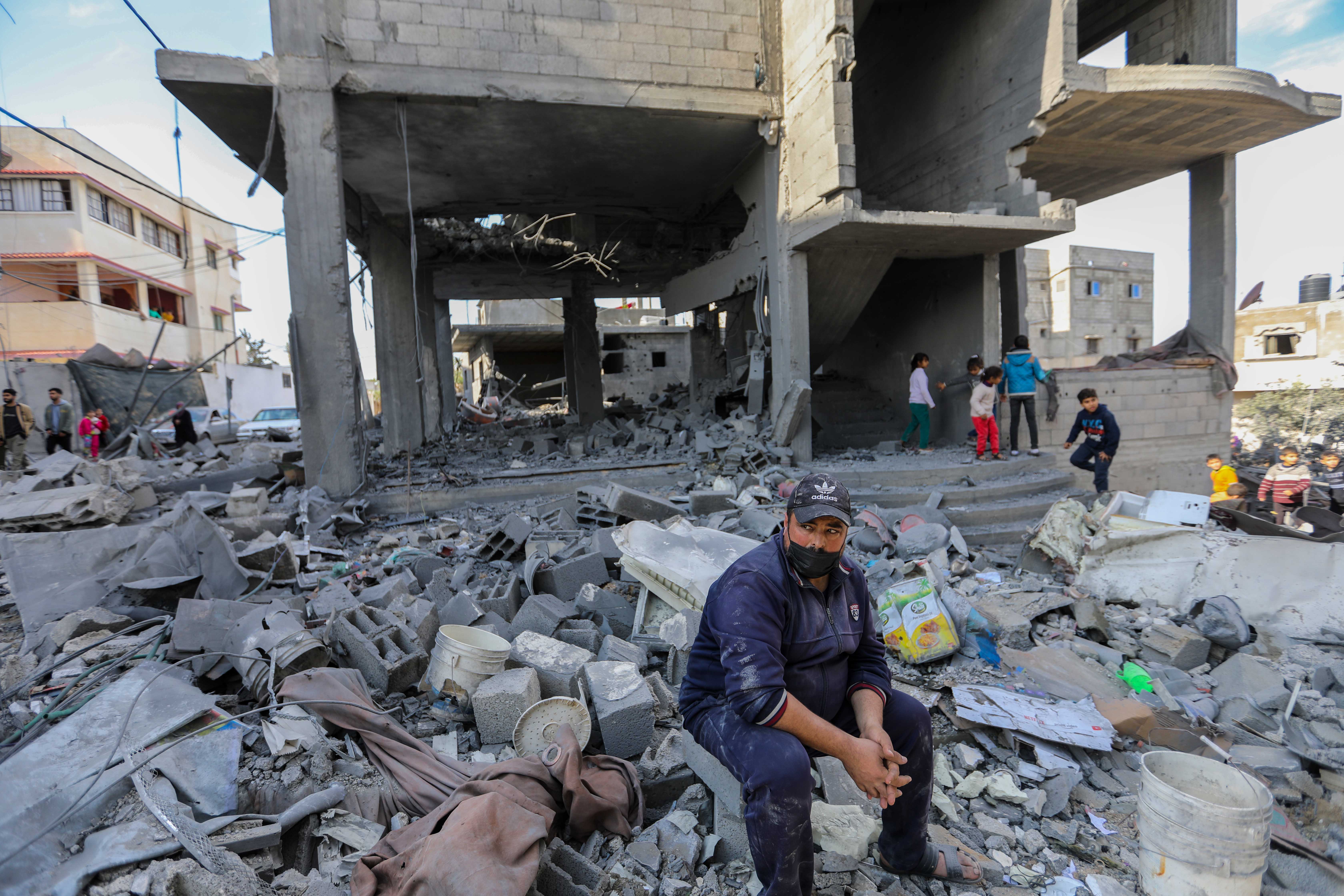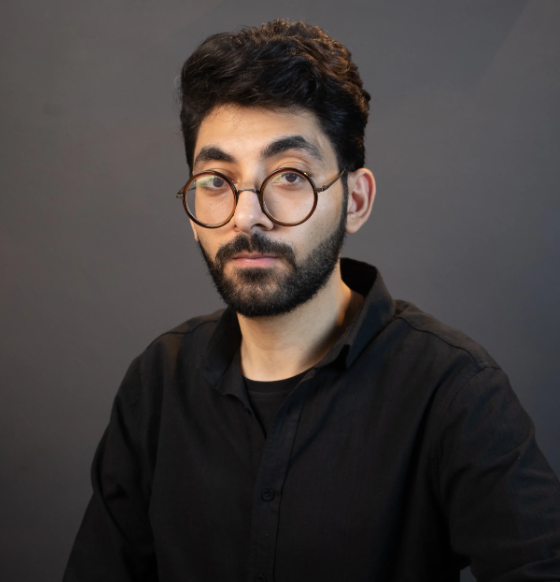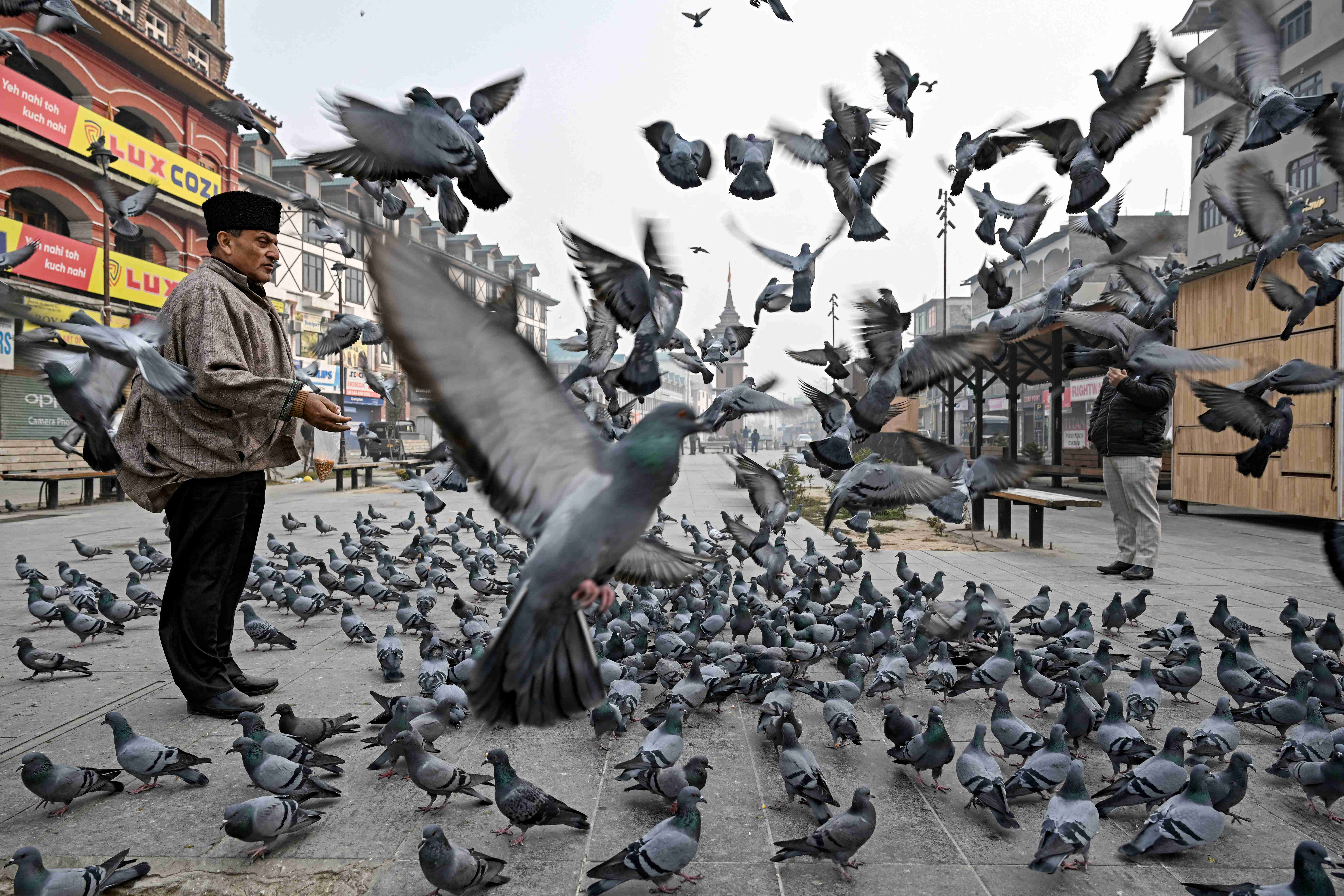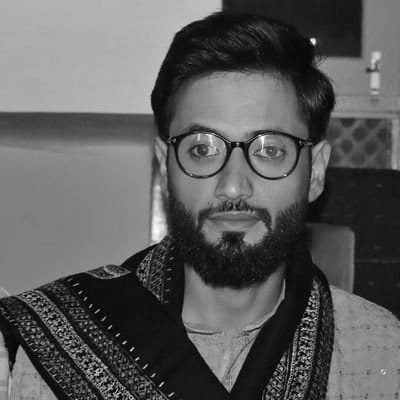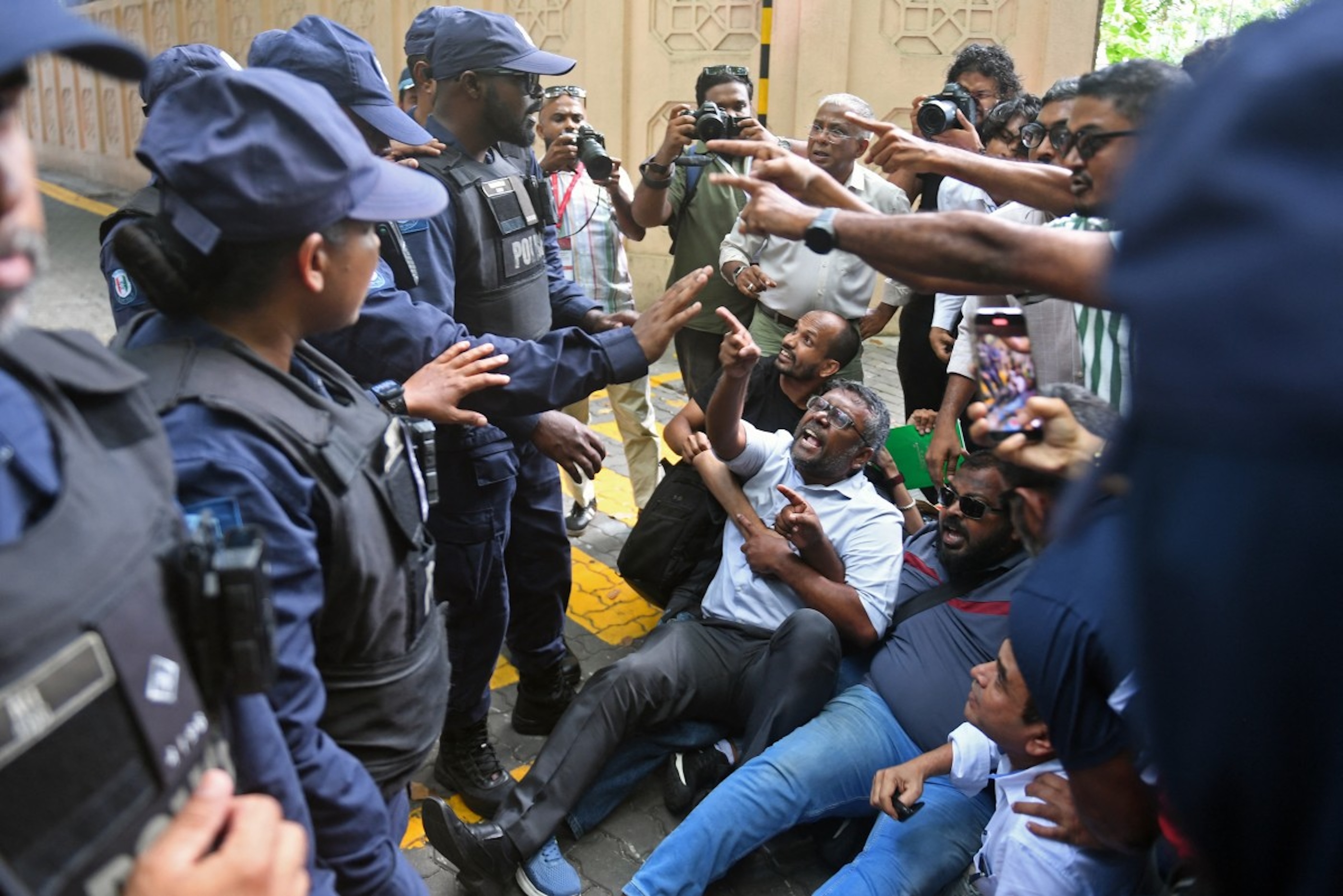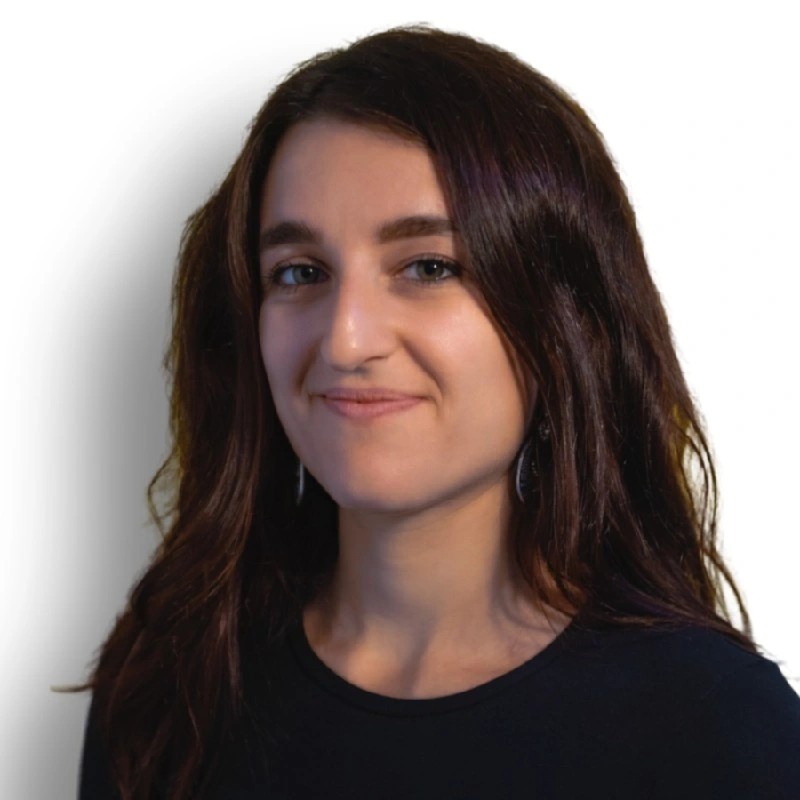طوال الأسابيع التسعة الأولى وعلى مدار الساعة، قدمت شبكتا الجزيرة وسي أن أن تغطية إعلامية واسعة للحرب على غزة. لقد أعطت الجزيرة مزيدا من الاهتمام لهذه الحرب، لكن أيضا حجم الاهتمام الذي أولته "سي أن أن" كان كبيرا مقارنة بالشبكات الإعلامية الأخرى.
لا شك أن تنوع الخطاب والتقارير في الممارسات الصحفية التي تغطي الحدث نفسه يعد أمرا طبيعيا، لكن ما يلفت الانتباه هو أن الخطاب الإعلامي لشبكتي الجزيرة وسي أن أن اختلف بشكل جذري في المحتوى نفسه والاعتماد على المصادر؛ فرغم أنهما تنقلان الحدث من الميدان نفسه، فقد خرج كل واحد بنسخة ورواية مختلفة للمعركة نفسها.
تحليل المحتوى: نهج معاكس
غطت شبكة الجزيرة الحرب تحت عنوان "الحرب الإسرائيلية على غزة"، بينما غطتها سي إن إن تحت عنوان "الصراع الفلسطيني - الإسرائيلي".
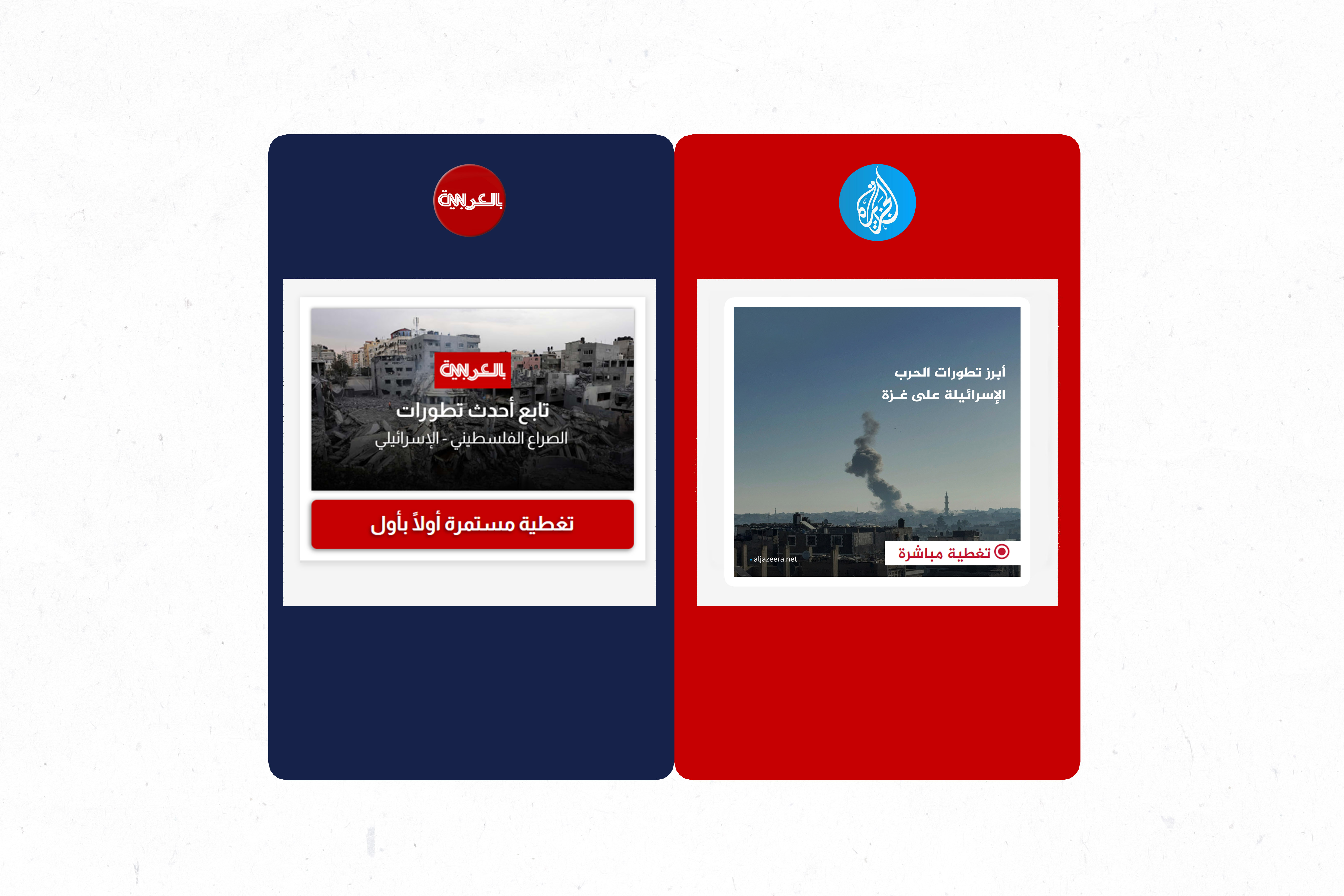
الملحوظ أن شبكة سي أن أن في تغطيتها للحرب بأوكرانيا لم تسمها بتسمية حرب غزة نفسها، إنما فرقت بين جيش غازٍ ودولة تدافع عن نفسها، مع الفارق الكبير بين غزة وأوكرانيا، لكن الشاهد أن المعايير التي استخدمتها سي أن أن في حرب أوكرانيا اختفت في حرب غزة، وتحولت التغطية من حرب تشنها إسرائيل على غزة إلى صراع متكافئ بين طرفين، وفي بعض الأحيان تطلق عليها عبارة "حرب إسرائيل ضد حماس".

لم تتفق الشبكتان على المصطلحات التحريرية، وعند النظر إلى الطريقة التي تصاغ بها تقارير سي أن أن نجد أنها اعتمدت على تصنيفات "الإرهاب" الأمريكية – الإسرائيلية.
فعلى سبيل المثال، قصف الجيش الإسرائيلي واحتلاله لغزة تطلق عليه سي أن أن مسميات "عملية عسكرية - اشتباك - الجيش الإسرائيلي يطارد - إسرائيل تصعد الحرب - الجيش الإسرائيلي يكثف هجماته - استئناف الغارات الجوية الإسرائيلية - توسيع العملية البرية" بينما تطلق على المقاومة مصطلحات "المهاجمين - المقاتلين - المحاربين – المسلحين".
وفي تناول سي أن أن لـ قتلى جنود الاحتلال، تقول على سبيل المثال: "فتح مسلحون من حماس النار على الجنود، وقُتلا بن زوسمان وبنيامين يهوشوا، في المقابل تقول مثلًا في أحد تقاريرها عن الفلسطينيين الذين قتلهم الاحتلال: "مقتل 931 فلسطينيا"، أي إن الإسرائيلي مبني للمعلوم والفلسطيني مبني للمجهول.
أما الجزيرة فقد تعاطت مع الحرب من منطلق أنها احتلال وعدوان؛ إذ أشارت إلى المقاومة الفلسطينية باسمها واستخدمت مصطلحات "الاحتلال - المقاومة - شهداء - قصف - قوات الاحتلال – العدو"، وقد دفع ذلك الحكومة الإسرائيلية إلى اتهام الجزيرة بالتحيز وبأنها صوت "الإرهابيين"، كما تلقى مراسلو الجزيرة عدة تحذيرات إسرائيلية، وبالفعل استهدفت عائلات بعضهم.
تقارير الجزيرة ركزت بشكل أكبر على معاناة الشعب الفلسطيني في غزة، وتغطية الأحداث مثلما وقعت، وعَدّ الجيش الإسرائيلي محتلا، وأشارت إلى الجرائم التي ارتكبها الاحتلال بمسمياتها، كما عدّت حماس مكونا أساسيا من المجتمع الفلسطيني.
بينما سي أن أن، ومنذ البداية وإلى اليوم، أعطت المساحة والصوت الأكبر للجيش الإسرائيلي، وأشارت إليه في كثير من الأحيان باسم "قوات الدفاع" ورأت أن توغل القوات الإسرائيلية في غزة ليس احتلالا أو غزوا، وأن كل الجرائم التي يرتكبها الاحتلال هي رد على "هجوم حماس في 7 أكتوبر".
ورغم تعدد جرائم الاحتلال، كانت نبرة سي أن أن الانتقادية تجاه الاحتلال خفيفة جدا بل وشبه منعدمة، بعكس نبرة الغضب تجاه حماس، وهي نبرة ما زالت حتى الآن هجومية. في الواقع، معظم تقارير سي أن أن كانت أكثر من مجرد تقارير إخبارية تحتوي على معلومات، بقدر ما كانت دفاعا عن جيش الاحتلال.

نأتي بعد ذلك إلى المحتوى والإنشاءات الخطابية؛ إذ استخدمت كلتا الشبكتين أدوات أسلوبية مختلفة تماما في تصوير الحرب والضحايا، ولعل الفارق الرئيسي الأكبر هو اعتماد "سي أن أن" على إعادة صياغة الحدث وإضفاء الشرعية على إجراءات الاحتلال وإلقاء اللوم على الفلسطينيين؛ فما يقرب من ثلث تقارير سي أن أن كانت تبريرا لتصرفات الجيش الإسرائيلي وإجراءاته تجاه غزة، وبأسلوب يجعل الخطاب الرسمي الإسرائيلي أكثر عقلانية، كما قلَّلت من شأن الضحايا الفلسطينيين.
في تناول سي أن أن لـ قتلى جنود الاحتلال، تقول على سبيل المثال: "فتح مسلحون من حماس النار على الجنود، وقُتلا بن زوسمان وبنيامين يهوشوا، في المقابل تقول مثلًا في أحد تقاريرها عن الفلسطينيين الذين قتلهم الاحتلال: "مقتل 931 فلسطينيا"، أي إن الإسرائيلي مبني للمعلوم والفلسطيني مبني للمجهول.
بينما تغطية الجزيرة كانت داعمة لغزة وأدانت جرائم الاحتلال، وفي حين فسرت الجزيرة بوضوح الأسباب التي أدت إلى 7 أكتوبر، لم تقدم سي أن أن أي تفسير سوى اللازمة المعروفة: "الهجوم الدموي الذي نفذته حماس في 7 أكتوبر".
وفي تناولها للتصريحات والإحصاءات الصادرة عن حكومة غزة، تنقلها بصيغة التشكيك؛ فعلى سبيل المثال، عند الحديث عن أعداد القتلى الذين قتلهم الاحتلال، دائمًا ما ترفق سي أن أن في كل تقاريرها هذه العبارة "بحسب وزارة الصحة التي تسيطر عليها حماس" لخلق تشكيك بأن هذه الأرقام وإن كثرت فهي غير صحيحة، لكن في المقابل لا يوجد تقرير واحد شكك في أرقام الاحتلال وإحصاءاته التي ذكرتها أكثر من مرة.

بجانب أن الشخصية الفلسطينية التي تعتمد عليها سي أن أن –سواء أكانت مصدرا أو مقابلات أو تحليلات للضيوف- تكون مختارة بعناية؛ فلا يُختار من قد يتعاطف مع وجهة نظر المقاومة أو من يفسر الأحداث التي أدت إلى 7 أكتوبر، بل معظم الضيوف لديهم موقف سلبي تجاه المقاومة، ويُؤتى بهم بشكل خاص لتُنتزَع منهم إدانة أو وجهة نظر معينة.

كان ثمة اختلاف أيضا في عدد كلمات التقارير واستخدام الوسائط المتعددة (فيديو، صورة، منشورات مواقع التواصل الاجتماعي...). استخدمت سي أن أن عدد كلمات أقل من الجزيرة، وضمنت في تقريرها اقتباسات ومنشورات لقادة الاحتلال على مواقع التواصل، إضافة إلى الصور والفيديوهات المختارة بعناية والمؤيدة للرواية الإسرائيلية بشكل لا يقارن بالرواية الفلسطينية.
في المقابل، كانت تقارير الجزيرة أكبر من حيث عدد الكلمات، وضمت في غالبيتها صورا ومقاطع الفيديو ومنشورات من وسائل التواصل الاجتماعي متبوعة بالنص، كما دمجت مصادر المواطنين مع مصادرها، وكانت التقارير والقصص الإخبارية للجزيرة أطول وأكثر تفصيلا من سي أن أن.

ويُلحَظ أن الصور التي أرفقتها سي أن أن مع محتوى حماس وبيانات الحركة وتصريحاتها التي أطلقها قادة سياسيون، كلها كانت صورا عسكرية تظهر الحركة في وضع متوحش، وحتى في لقاءاتها مع شخصيات سياسية من حماس، فإنها لم تدرج صورهم، وهو ما يجرد الحركة من أي بعد إنساني ومدني، وهذا بعكس تناول الجانب الإسرائيلي الذي قُدِّم بصورة مثالية وحظي بصور ومقاطع فيديو متعاطفة، ولا سيما مع الاستخدام المكثف واللافت للفيديوهات والصور التي تظهر التعاطف مع الأسرى الإسرائيليين.
في المجمل، انحازت شبكة الجزيرة إلى موقف غزة والمقاومة الفلسطينية، وكان الشكل الإعلامي لها شاملا من الجوانب السياسية والعسكرية والإنسانية؛ إذ نقلت الواقع من على الأرض كما هو. وجدير بالذكر أن الجزيرة استخدمت وسائل التواصل الاجتماعي بشكل مكثف وفعال، وكان أيضا لمراسليها دور كبير في التفاعل على وسائل التواصل.
ورغم أن الجزيرة أعطت أيضا مساحة إعلامية للخطاب الإسرائيلي، واستضافت متحدثين إسرائيليين مدربين، فإنها مساحة تأتي في سياق تغطية واسعة للحرب، ولا تقارن على الإطلاق بمساحة الجانب الفلسطيني ونسبته، وهذا طبيعي بحكم أن هناك محتلا وشعبا محتلا، والموضوعية تقتضي عدم المساواة بينهما.
في المقابل، حرصت سي أن أن على تقريب الخطاب والمحتوى الإسرائيلي قدر الإمكان وتبرئة إسرائيل وربط حربها بحق الدفاع عن نفسها أكثر من مجرد نقل الخبر، إلى جانب الاعتماد على الأصوات القوية والمسؤولين بالجيش الإسرائيلي بوصفهم مصادر أولية؛ لتجمع ما بين التفسير السلبي والتقييم غير الأخلاقي.

كما لوحظ عدم توازن سي أن أن في عرض "طرفي الصراع" واستخدام مصطلحات منحازة للطرف الإسرائيلي، وحرمان الفلسطينيين من المساحة نفسها التي أعطيت للاحتلال، وفي بعض الأحيان جرى تشويه الفلسطينيين والتقليل من شأن ضحاياهم ومهاجمة المواقف الإنسانية لكتائب القسام في التعامل مع الأسرى. وبشكل لافت، لوحظ كذلك تحاشي ذكر أي انتصار عسكري للمقاومة أثناء التصدي للاحتلال.
عن طبيعة المصادر
الاختلاف بين الشبكتين ظهر أيضا في عدد المصادر وطبيعتها وأنواعها؛ ذلك أنه يلاحظ أن عدد المصادر الفلسطينية بمختلف توجهاتها كان أكبر بكثير في الجزيرة من سي أن أن، بينما كان عدد المصادر الإسرائيلية في الأخيرة أكبر بكثير من الجزيرة.
لقد اعتمدت تقارير سي أن أن ومقالاتها على خمس فئات من المصادر؛ أولها مصادر الجيش الإسرائيلي، تليها مصادر من مؤسسات صحفية إسرائيلية، ثم مصادر المسؤولين الأمريكيين، ثم مصادر مؤسسية وغير رسمية، وفي الأسفل نجد المصادر الفلسطينية. وفي الواقع، كانت "سي أن أن" أقل اعتمادا على المنافذ الإخبارية الأخرى، وأكثر اعتمادا على الجيش الإسرائيلي تحديدا والمسؤولين الأمريكيين.
في المقابل، اعتمدت الجزيرة على مصادر فلسطينية أولا وعلى إجراء مقابلات مع مواطنين من غزة بجانب مراسلي الشبكة وتقاريرهم الحصرية، كما اعتمدت الجزيرة في كثير من الأحيان على مصادر إخبارية غير رسمية؛ مثل رويترز، وأسوشيتد برس، واستخدمت أيضا المعلومات الواردة من صحفيين آخرين ومصادر إسرائيلية وأمريكية، لكن كان العدد الأكبر للمصادر الفلسطينية.
لعل نقطة تميز الجزيرة الأساسية هي في استخدام مراسلين وشهود عيان من غزة في تغطية الأخبار، على عكس شبكة سي أن أن التي اعتمدت بالدرجة الأولى على المسؤولين الإسرائيليين والأمريكيين. صحيح أن سي أن أن أجرت مقابلات مع فلسطينيين واستخدمت مصادر فلسطينية، لكنها لا تقارن على الإطلاق بالمساحة نفسها التي أعطتها للاحتلال والمسؤولين الأمريكيين.
وكان الاختلاف الأكبر بين الشبكتين في طريقة استخدام المصدر؛ على سبيل المثال: عند الحديث عن حصيلة الشهداء والجرحى الفلسطينيين، اعتمدت الجزيرة على مصادر فلسطينية رسمية، وأشارت إليها بمسمياتها، بينما كانت سي أن أن، في معظم الأحيان، عندما تشير إلى مصدر فلسطيني رسمي ومدني من غزة، ترفق معه جملة "التابع لحماس" أو الجهة "التي تديرها حماس" أو "وفقا لمعلومات من سلطات حماس".
وعلى هذا الأساس، تلاعبت سي أن أن بالمصادر، واستخدمت المعلومات بشكل نمطي لتعزيز وجهة نظر الاحتلال وتضليل الجمهور. ويمكن القول إن سي أن أن حددت من البداية اختيار مصادر معينة وأسكتت بعض المصادر لتخرج بالإطار الذي خرجت به.
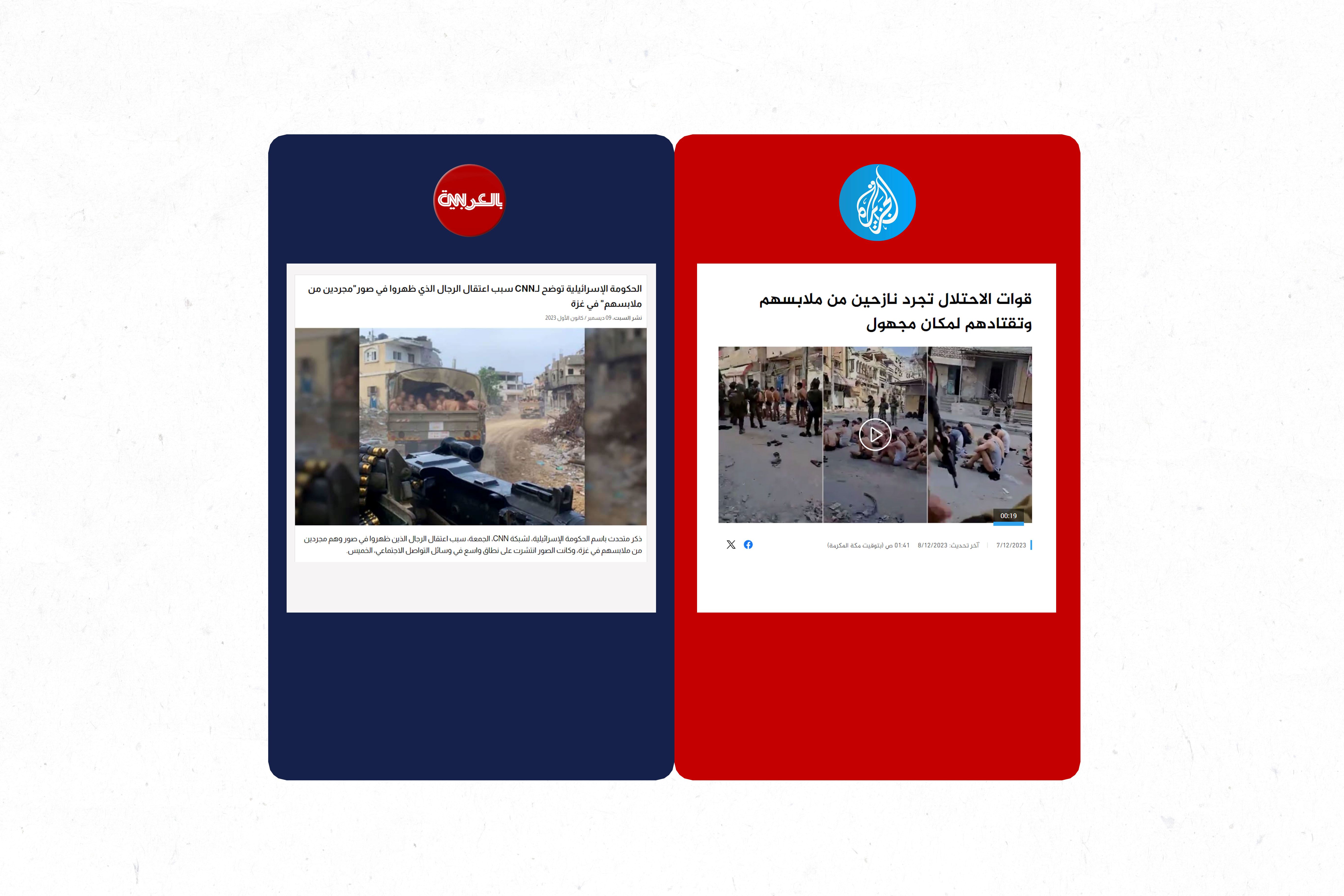
لا شك أن هناك فرقا شاسعا بين تغطية سي أن أن للأحداث والقضايا السياسية الكبرى كحالة أوكرانيا مثًلا مقارنة بغزة؛ ففي الأولى كانت المعايير واضحة بشكل كبير، بينما في الثانية التزمت بالخط الرسمي للسياسة الأمريكية.
كان الاختلاف الأكبر بين الشبكتين في طريقة استخدام المصدر؛ على سبيل المثال: عند الحديث عن حصيلة الشهداء والجرحى الفلسطينيين، اعتمدت الجزيرة على مصادر فلسطينية رسمية، وأشارت إليها بمسمياتها، بينما كانت سي أن أن، في معظم الأحيان، عندما تشير إلى مصدر فلسطيني رسمي ومدني من غزة، ترفق معه جملة "التابع لحماس" أو الجهة "التي تديرها حماس" أو "وفقا لمعلومات من سلطات حماس".
ومع هذه المقارنة التي ذكرناها، فـحجم الأخبار والتقارير وعدد المصادر المستخدمة في شبكة الجزيرة إلى جانب ميل الجماهير العربية لمتابعتها - رغم حظرها في العديد من البلدان العربية - لا يقارن حقيقة بـ سي أن أن؛ ربما لأن الجزيرة خرجت عن الإطار الدولي للإعلام في تناول أحداث الحرب على غزة، وقدمت كذلك دروسا مهنية (حالة "وائل الدحدوح" على سبيل المثال).
